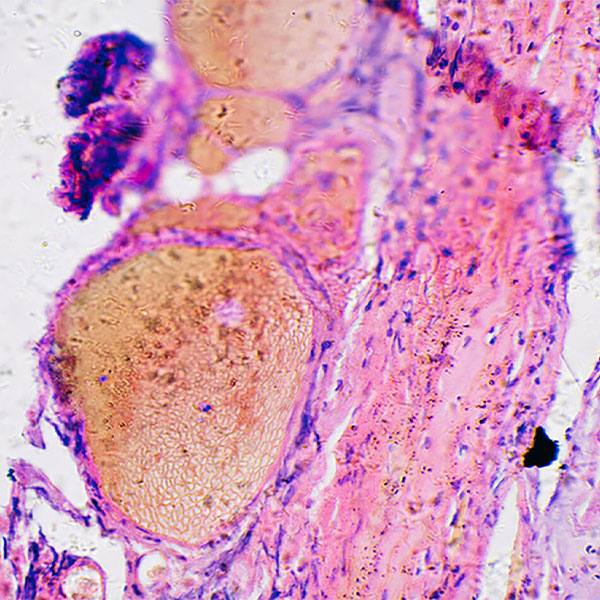-
Healthcare Delivery
The Science of Health Care Delivery
Since its founding Mayo Clinic has sought ways to improve how patient care happens. More than improving quality control or increasing efficiency, Mayo Clinic has turned health care delivery into a science.
Sian Hales gave birth to her fourth child in June 2017, but the experience was different this time. She received much of her prenatal care at home. And she performed much of this care herself.
Instead of making a dozen or so appointments and driving to the clinic for each, she sat comfortably in her living room. When it was time to check her blood pressure and the fetal heart rate, she did so herself, using equipment provided by the Mayo Clinic OB Nest program.
OB Nest, established at Mayo Clinic in 2016, changes pregnancy for low-risk expectant mothers from a highly clinical process to a personalized wellness experience. It reduces the number of planned clinical visits to no more than eight, and provides mothers with
a fetal heart rate monitor and blood pressure cuff for home monitoring. Patients also can access an online community moderated by OB Nest nurses and call those nurses whenever questions arise.
For Sian, the program couldn’t have worked better. She says she felt more engaged and comforted in that she could always pick up the phone and talk to an OB Nest nurse. The equipment was easy to use, she says, and, by the end, her 2-year-old daughter, Quinn, was an active participant.
“Is it time to check the baby’s heartbeat?” Quinn would ask excitedly.
Though Sian and hundreds of other moms who participate in OB Nest may not realize it, the program is based on a series of collaborations between the Mayo Clinic Department of Obstetrics and Gynecology and the Mayo Clinic Robert D. and Patricia E. Kern Center for the Science of Health Care Delivery. Working with Mayo’s Office of Information and Knowledge Management, they found a better way to track patients who were at high risk and those who weren’t. With human-centered design techniques from the Mayo Clinic Center for Innovation, researchers explored creative patient-provider models.
And finally, a research team conducted a randomized clinical trial to test a new model of delivering prenatal care. In Obstetrics and Gynecology, Mayo researchers reported that the program decreased in-office visits, increased patient satisfaction and reduced stress for expectant mothers.
“It was great for me with four kids, and nice being able to stay at home and feel like I’m a part of the process,” Sian says.
By gathering data like this, the Kern Center works directly with health care providers to make broad improvements to patient care.
ENGINEERING EMERGENCY MEDICAL CARE
Kalyan Pasupathy, Ph.D., had heard for years about the engineering principles at Mayo Clinic and was always curious. So when the need arose to improve delivery of care at Mayo, using data and decision science, he jumped at the opportunity. The project? Improve efficiency in the complex environment of the Emergency Department.
“It’s been the highlight of my career,” says Dr. Pasupathy of this engineering work in the Kern Center.
In 2013, Dr. Pasupathy was the scientific director for Mayo’s Emergency Department Clinical Engineering Learning Laboratory, or ED-CELL. Working side by side with the team’s medical director, Thomas Hellmich, M.D., and other emergency personnel, the team installed radio frequency identification (RFID) technology throughout the department.
In the Emergency Department the RFID tags instantly locate patients, equipment and staff. After installing 194 ceiling-mounted readers across Mayo’s 54,500-square-foot Emergency Department, the research team developed software to access the data both in real time and for later analysis.
The result is what the team calls a fully searchable Emergency Department.

The technology offers myriad benefits. In the Annals of Emergency Medicine, the team reported that RFID tagging could reduce wasted time searching for patients, equipment and staff by 87 percent. This not only speeds care, but represents a potential savings of $1.87 million annually.
RFID tags also are used to analyze patient wait time and the time health care providers spend with patients to look for ways to improve both. And the technology can also help trace anyone who came in contact with patients who have particularly contagious pathogens. A Mayo study, published in the American Journal of Infection Control, found 45 additional staff members from nine pertussis (also called whooping cough) cases who wouldn’t have been identified using the standard method.
Mayo researchers are now using these engineering principles in other departments, launching a Radiology CELL last year. These initiatives are due to the collaborative nature of a CELL, where traditional barriers between research and medical practice are torn down, says Dr. Pasupathy.
THE IDEAL DOSE
Just down the hall from Dr. Pasupathy, Elizabeth Habermann, Ph.D., works on improving surgical outcomes. Front and center for her team is an issue overwhelming medical centers, politicians and health organizations across the United States: the opioid epidemic.

Since 1999, drug-overdose deaths have trended up nationally, nearly tripling in the 15-year period from 1999 to 2014. From 2014 to 2015, they continued to rise (11.4 percent) and 60.9 percent of those deaths involved an opioid according to the Centers for Disease Control and Prevention.
“There’s an urgency to address the opioid epidemic,” Dr. Habermann says. “Surgeons know a small amount of their patients become dependent, and we want to reduce that number.”
The need for evidence-based guidelines for prescribing opioids after surgery is quickly emerging. Dr. Habermann and a team of surgeons, nurses, pharmacists and pain specialists are studying Mayo Clinic’s prescribing practices in hopes of optimizing prescriptions. Their initial research, published in the Annals of Surgery, shows a wide variation within specific surgery types and among Mayo Clinic campuses in Arizona, Florida and Minnesota — even after adjusting for other factors. The median opioid prescription on all campuses equaled 50 pills of 5-milligram oxycodone, which is almost twice the amount draft guidelines from the state of Minnesota recommend for
a maximum. Though the guidelines were not released at the time of the study, 4 in 5 prescriptions exceeded the recommended amount, which presented an opportunity for improvement.
“Mayo is unique in that we have a large volume surgical practice,” Dr. Habermann says. “So it’s an opportunity to be transparent about our prescribing data, and use that data to improve our practice and help other institutions do the same.”
By shining a light on Mayo’s prescribing, Dr. Habermann’s research team is showing the need for an evidence base to use when establishing guidelines. Using this research, Mayo Clinic’s departments of Obstetrics and Gynecology, Neurologic Surgery and Orthopedic Surgery have begun developing guidelines.
But the research team isn’t stopping there. They’re surveying 2,500 patients to determine which demographics and surgery types have an abundance of leftover medication and how well patients are managing their pain.
“This research isn’t about taking away opioid prescriptions from patients who need them after surgery,” Dr. Habermann says. “This is about optimizing prescriptions for every unique patient, so everyone has enough to manage the pain but also to reduce the leftover pills in the medicine cabinet at home, which can lead to diversion.”
“Collaborating across specialties at Mayo, we’re forging our own path,” she says. “While it’s challenging, it’s rewarding and hopefully helps patients both within and outside of Mayo.”
- Adam Harringa, February 5, 2018
Related Articles









